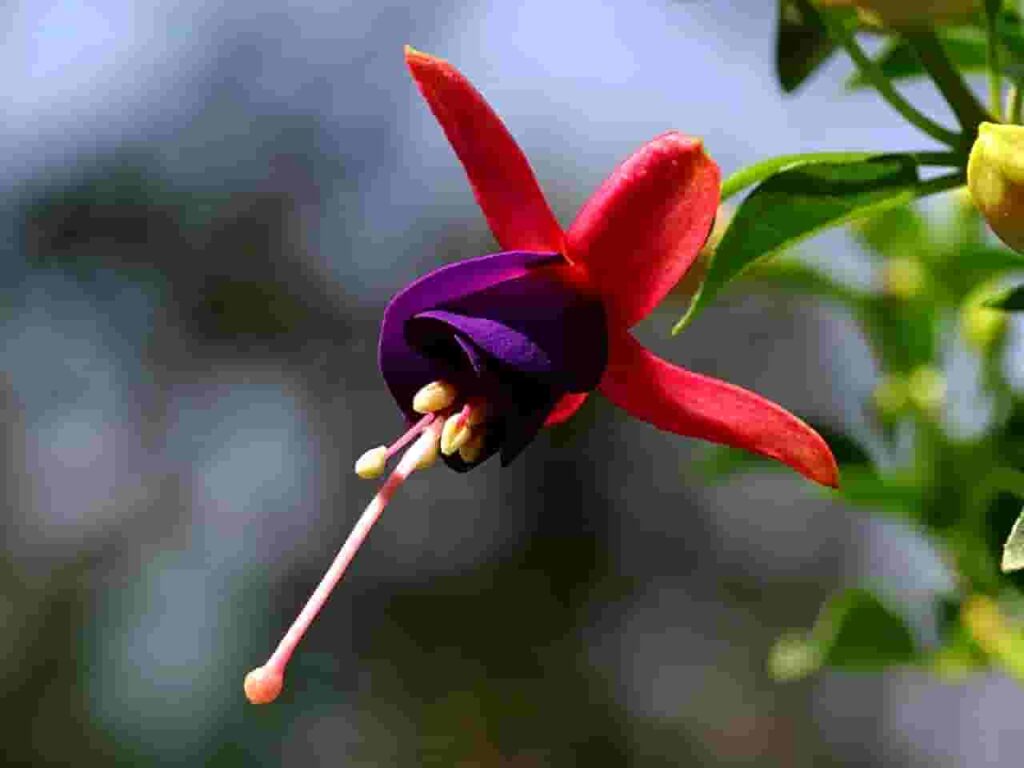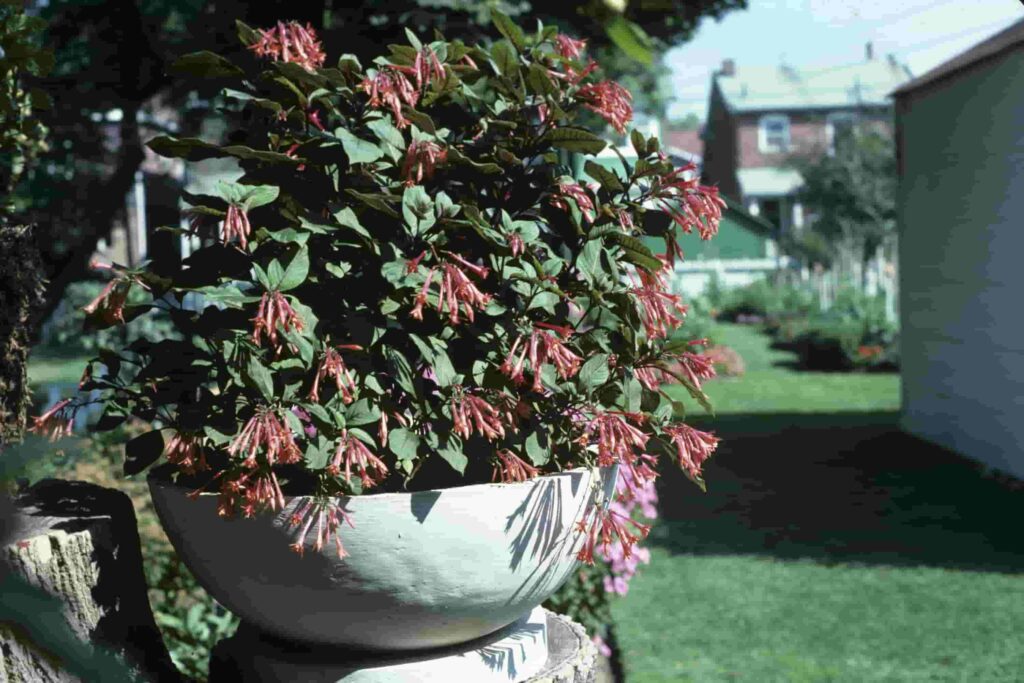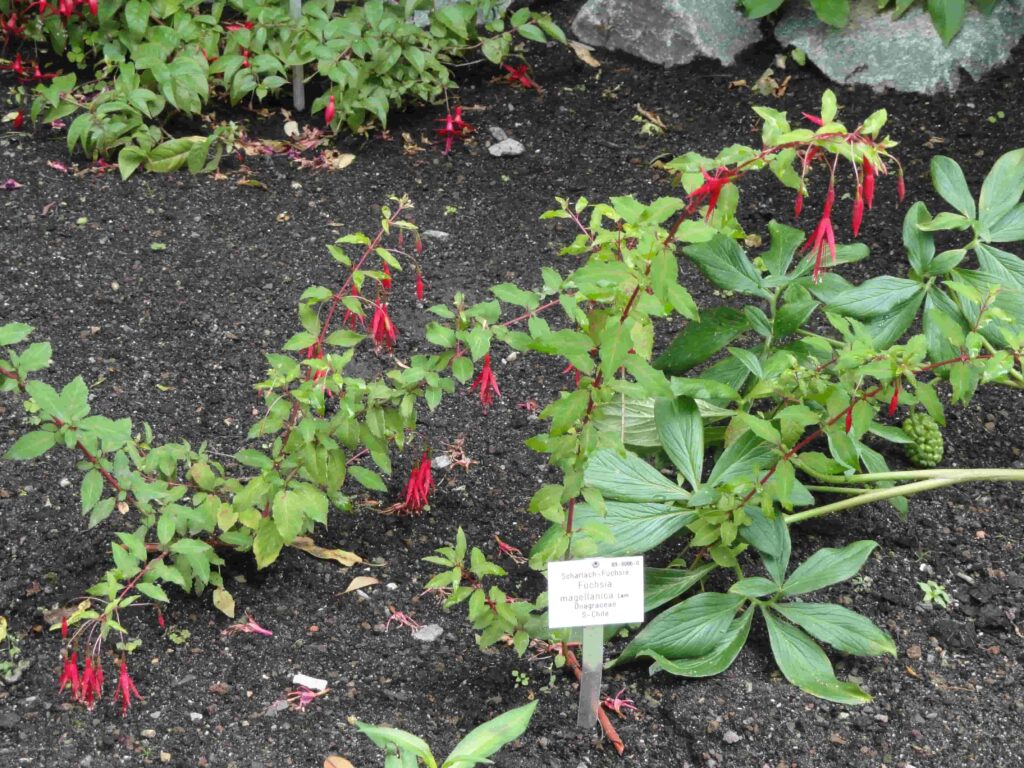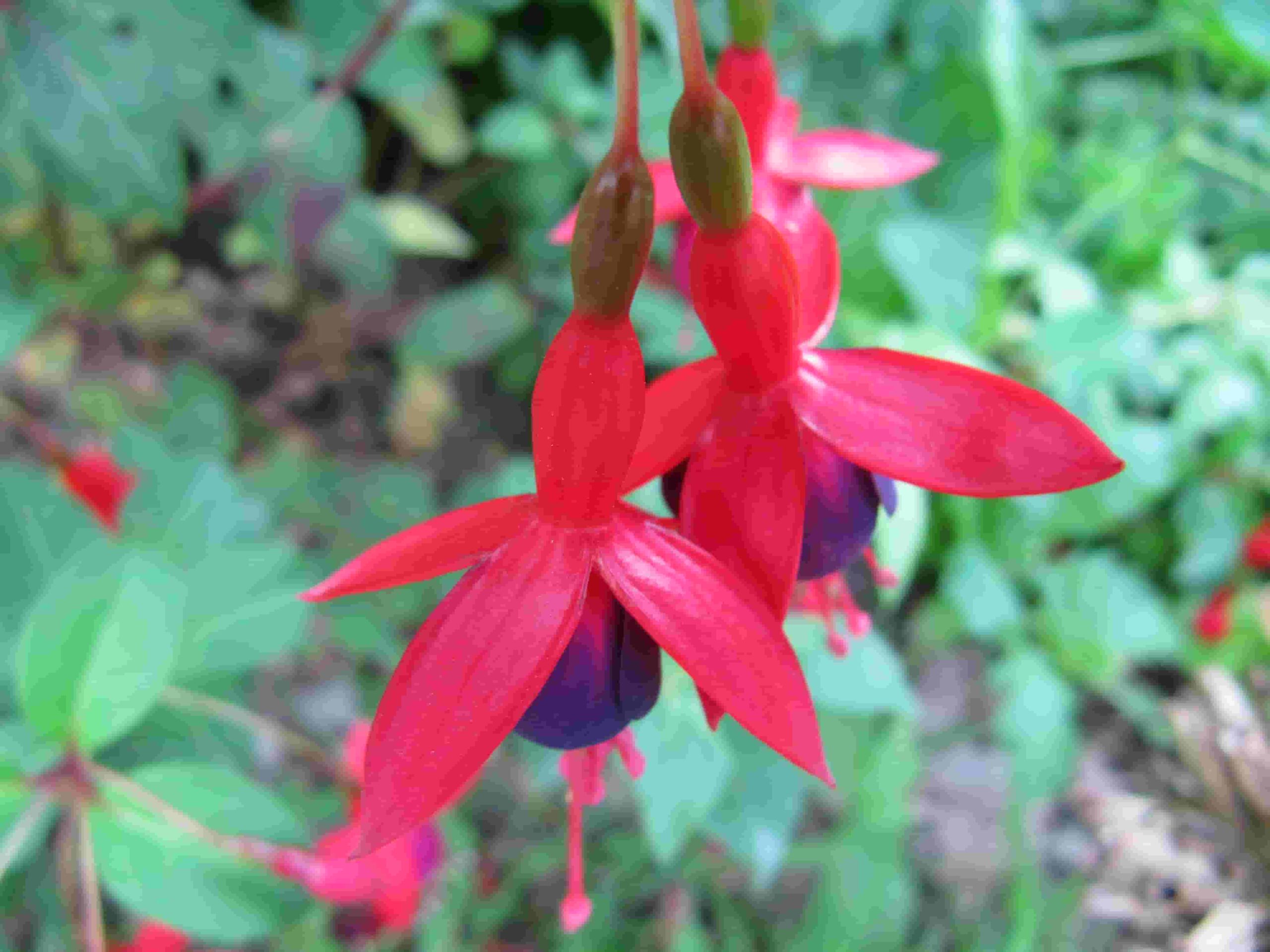परिचय
Few flowers can match the enchanting fuchsias in terms of giving beauty and elegance to your garden. These delicate and colorful blooms are beloved by gardeners worldwide for their stunning appearance and versatility. In this article, we will explore the world of fuchsias, from their origins and varieties to tips on cultivation and care. Come along on this adventure with us as we learn more about this fascinating flower.
विषयसूची
- परिचय
- 1. The Origins of Fuchsias
- 2. A Multitude of Varieties
- 3. Choosing the Right Fuchsia for Your Garden
- 4. Planting and Cultivating Fuchsias
- 5. Essential Care and Maintenance
- 6. Common Pests and Diseases
- 7. Tips for Pruning and Training Fuchsias
- 8. Propagation Techniques
- 9. Container Gardening with Fuchsias
- 10. Landscaping Ideas with Fuchsias
- 11. Fuchsias in Hanging Baskets
- 12. Fuchsias as Indoor Plants
- 13. Companion Planting with Fuchsias
- 14. Fuchsias in Floral Arrangements
- 15. Fuchsias: Symbolism and Meaning
- निष्कर्ष
- पूछे जाने वाले प्रश्न
1. The Origins of Fuchsias

Fuchsias were first discovered in the late 17th century by the botanist Charles Plumier during his explorations in the Caribbean. Plumier named the flower “Fuchsia” in honor of the renowned German botanist, Leonhart Fuchs. These elegant plants are native to Central and South America, where they thrive in the cool, humid climates of the region.
2. A Multitude of Varieties
Fuchsia plants come in a wide array of varieties, each showcasing its unique beauty. From the graceful “Angel’s Earrings” to the vibrant “Swing time,” there is a fuchsia for every taste and preference. Some varieties feature single blooms, while others display double or semi-double flowers. The colors range from delicate pastels to bold and striking hues, making fuchsias a versatile choice for any garden.
3. Choosing the Right Fuchsia for Your Garden
Selecting the right fuchsia for your garden depends on various factors, such as your climate, available space, and desired aesthetic. Consider the growth habit, flower form, and size when making your choice. Trailing varieties are perfect for hanging baskets, while upright types create beautiful borders and focal points. It’s essential to choose fuchsia plants that are well-suited to your local climate to ensure their long-term success.
4. Planting and Cultivating Fuchsias
Prepare an organically rich, well-draining soil before planting fuchsias. Because direct sunshine can burn the fragile foliage, pick a spot with some cover. Create a hole just slightly bigger than the root ball, insert the plant, and then cover with earth. To aid the plant in establishing its roots, water it well. Healthy growth and plenty of blooms will be encouraged by regular watering and a balanced fertilizer.
5. Essential Care and Maintenance
Fuchsia plants require regular care to thrive and reach their full potential. Adequate watering, proper fertilization, and regular pruning are essential. Deadheading spent flowers will encourage continuous blooming. Additionally, providing support such as stakes or trellises can help prevent the plants from toppling over under the weight of their flowers.
6. Common Pests and Diseases
Like any other plant, fuchsia plants are susceptible to pests and diseases. Common pests that may affect fuchsia include aphids, whiteflies, and spider mites. Regular inspections and prompt action can help control these nuisances. Diseases like gray mold and rust can also occur, but maintaining good airflow and avoiding overwatering can mitigate their impact.
7. Tips for Pruning and Training Fuchsias

Pruning is an essential aspect of fuchsia care, as it helps maintain the plant’s shape and promotes new growth. Trim back any broken or dead branches on a regular basis. Training fuchsia plants to a desired shape or form can be achieved through strategic pruning and the use of stakes or wires. This allows you to create stunning topiaries or espaliers, adding a touch of artistry to your garden.
8. Propagation Techniques
If you want to expand your fuchsia collection, propagation is a cost-effective way to do so. Fuchsia plants can be propagated through stem cuttings or by collecting and sowing their seeds. Stem cuttings are the most common method and involve taking a section of the plant and encouraging it to root in a suitable medium. With a bit of patience and care, you can multiply your fuchsia plants and share their beauty with others.
9. Container Gardening with Fuchsias
Fuchsia plants are well-suited for container gardening, allowing you to enjoy their splendor even if you have limited garden space. Select a container with good drainage and fill it with a well-draining potting mix. Trailing varieties can cascade over the edges of the container, creating a stunning display. Place your fuchsia pots in a location with filtered sunlight and water them regularly to keep the soil moist but not waterlogged.
10. Landscaping Ideas with Fuchsias
Incorporating fuchsia plants into your landscape design can add a touch of elegance and charm. Plant them alongside other shade-loving flowers, such as impatiens or begonias, for a vibrant and colorful display. Create a fuchsia hedge or border to define and enhance specific areas of your garden. With their diverse growth habits and stunning blooms, fuchsias offer endless possibilities for creative landscaping.
11. Fuchsias in Hanging Baskets
Fuchsia plants are popular choices for hanging baskets, thanks to their trailing growth habit and showy flowers. Select trailing or cascading varieties for this purpose. Ensure that your hanging baskets have good drainage and use a lightweight, well-draining potting mix. Hang them in a location with filtered sunlight, and water regularly to keep the soil evenly moist. Admire the cascading blooms as they brighten up your patio or balcony.
12. Fuchsias as Indoor Plants
With their enchanting blooms and attractive foliage, fuchsias make delightful indoor plants. Select compact or dwarf varieties that are well-suited for growing in pots. Place them near a window with bright, indirect light and maintain a consistent temperature. Indoor fuchsia plants require regular watering, but be careful not to overwater, as this can lead to root rot. Enjoy the beauty of fuchsia indoors and bring nature’s elegance into your home.
13. Companion Planting with Fuchsias

Fuchsias can thrive when planted alongside compatible companion plants. Consider pairing them with shade-loving annuals like lobelia or coleus. The contrasting colors and textures create visually appealing combinations. Be mindful of the growth habits and water requirements of the companion plants to ensure they coexist harmoniously with your fuchsias.
14. Fuchsias in Floral Arrangements
The stunning blooms of fuchsias can elevate any floral arrangement to a new level of elegance. Cut fuchsia flowers just as they begin to open fully, ensuring they have a long stem for arranging. Combine them with other complementary flowers, such as roses or lilies, to create a captivating bouquet. The vibrant colors and unique shape of fuchsia flowers will add a touch of sophistication to any floral display.
15. Fuchsias: Symbolism and Meaning
Throughout history, fuchsias have been associated with various meanings and symbols. In Victorian times, they were considered a symbol of abundance and wealth. Today, fuchsias are often associated with grace, elegance, and delicate beauty. These flowers make thoughtful gifts for birthdays, anniversaries, or special occasions, conveying sentiments of admiration and appreciation.
निष्कर्ष
Fuchsias are truly enchanting flowers that can transform any garden into a vibrant and elegant oasis. With their wide variety of colors, forms, and growth habits, there is a fuchsia to suit every gardener’s taste. Whether you choose to grow them in hanging baskets, containers, or as part of a stunning landscape design, these delicate blooms will bring joy and beauty to your outdoor spaces. With proper care and attention, you can enjoy their captivating presence year after year.
In conclusion, fuchsias are a true gem in the world of flowers. Their delicate and vibrant blooms, coupled with their versatility and beauty, make them an excellent choice for gardeners looking to add a touch of elegance to their outdoor spaces. By following the outlined guidelines for cultivation and care, you can enjoy the enchanting presence of fuchsias in your garden for years to come.
पूछे जाने वाले प्रश्न
1. Are fuchsias suitable for beginners in gardening?
Yes, fuchsia plants can be grown by beginners as long as they provide the proper care and follow basic cultivation guidelines. Starting with hardy varieties and gradually expanding their knowledge and skills can help beginners succeed with fuchsias.
2. How often should I water my fuchsias?
Fuchsias prefer evenly moist soil, so it’s important to water them regularly. By sticking your finger about an inch into the earth, you may determine the moisture level there. If the soil feels dry, water is required. Avoid overwatering, too, since this can cause root rot.
3. Can fuchsias survive cold winters?
While some fuchsia varieties are more tolerant of colder temperatures, most varieties are not frost-hardy. In areas with harsh winters, it’s best to grow fuchsias as annuals or provide protection by moving them indoors or covering them with mulch.
4. Do fuchsias attract bees and butterflies?
Yes, fuchsia flowers are known to attract bees, butterflies, and other pollinators. Their vibrant colors and nectar-rich blooms make them a valuable food source for these beneficial insects.
5. Can I grow fuchsias from seeds?
Yes, fuchsias can be grown from seeds. However, it’s important to note that not all fuchsias produce viable seeds, and the germination process can be challenging. Propagation through stem cuttings is the more common and reliable method.

